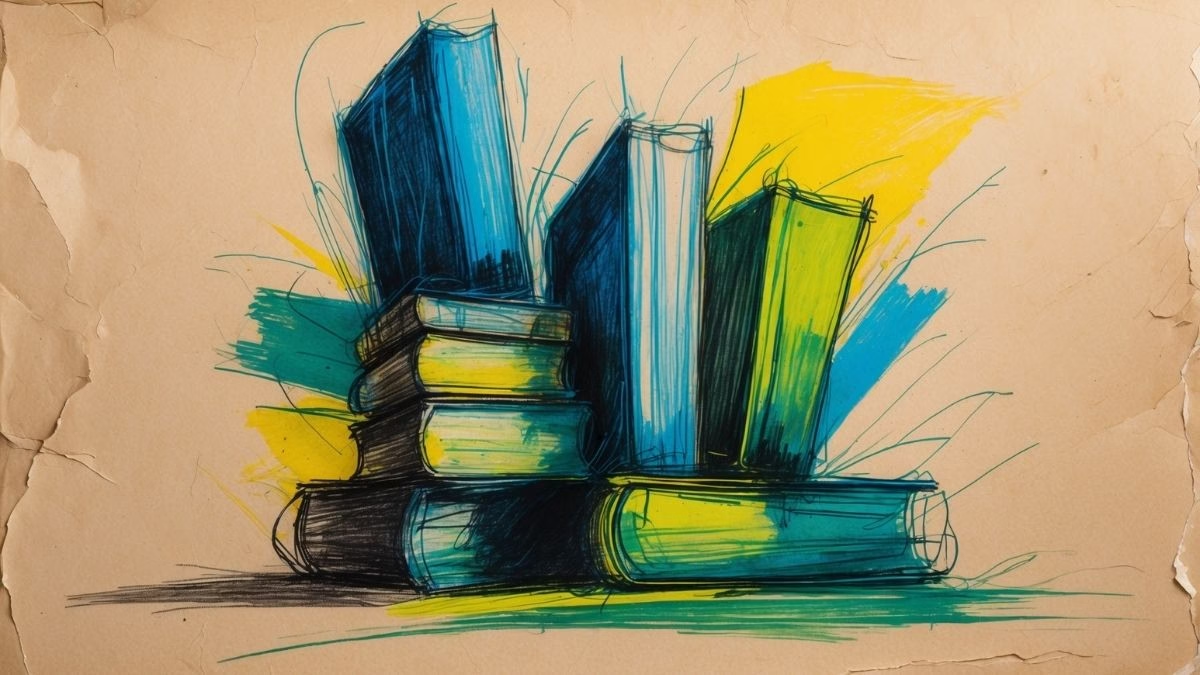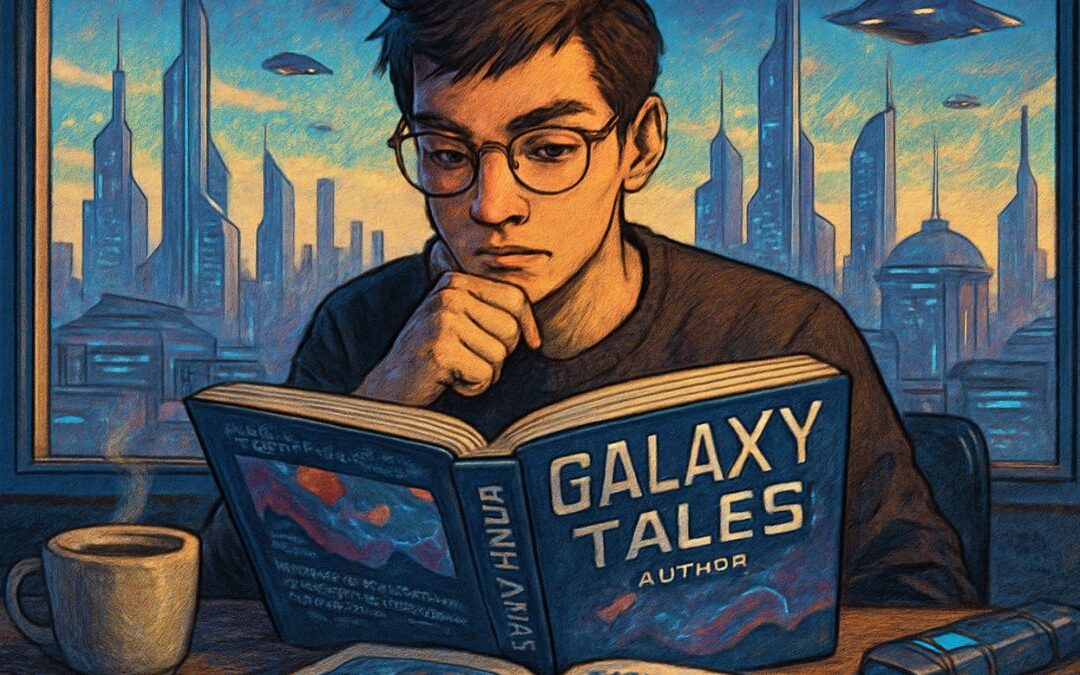MagTalk
“Make It New!”
“In or about December, 1910, human character changed.” This bold, and admittedly quite specific, declaration by Virginia Woolf gets to the very heart of one of the most seismic shifts in the history of art and literature: Modernism. For many readers, the word itself can be intimidating. It conjures up images of dense, difficult texts, of poems that don’t rhyme, and novels that seem to start in the middle and end without a resolution. If you’ve ever picked up James Joyce’s Ulysses and put it down ten pages later feeling utterly bewildered, you are not alone. Modernism was a revolution, a deliberate and explosive break from the past, and its shockwaves still define how we think about literature today.
This article is designed to be your guide through the beautiful, challenging, and ultimately rewarding landscape of Modernist literature. We’re going to tackle some of the most frequently asked questions about this pivotal period, which roughly spanned from the late 19th century to the mid-20th century. What was it? Why did it happen? Who were the major players? And why on earth did they write like that? Our goal is to demystify the movement, to peel back the layers of perceived difficulty and reveal the profound human concerns that lie at its core.
Think of this not as a dry academic lecture, but as a conversation. We’ll explore the historical anxieties—the wars, the new technologies, the groundbreaking psychological theories—that shattered the old certainties and forced artists to find a new language. We will delve into the innovative techniques they developed, from stream of consciousness to fragmentation, to capture this new, disorienting reality. By the end, you’ll see that Modernism isn’t just an intellectual puzzle; it’s a passionate, often desperate, attempt to make sense of the chaotic, exhilarating, and terrifying experience of being alive in the modern world.
The Basics: What, When, and Why?
FAQ 1: Okay, so what exactly is Modernism?
At its core, Modernism is not so much a style as it is a shared philosophical and artistic response to the conditions of modernity. The central rallying cry, famously coined by poet Ezra Pound, was to “Make it new!” Modernist artists and writers felt a profound sense of alienation from the traditions of the 19th century. They believed that the old ways of representing the world—the straightforward narratives, the reliable narrators, the clear moral lessons of Victorian literature—were no longer adequate to describe the reality of their time.
The world had become faster, more complex, and more fragmented. Think about the turn of the 20th century: the rise of industrial cities, the invention of the automobile and the airplane, the telephone, the cinema. Life was accelerating at a dizzying pace. At the same time, traditional pillars of faith and certainty were crumbling. The theories of thinkers like Friedrich Nietzsche (who declared “God is dead”), Sigmund Freud (who revealed the messy, irrational world of the subconscious), and Albert Einstein (whose theory of relativity shattered the notion of a stable, predictable universe) created a pervasive sense of disorientation. Modernism, then, is the art that reflects this new reality. It is often characterized by experimentation, individualism, and a focus on the inner life of the character over external plot.
FAQ 2: When did this all happen?
Pinpointing exact dates for an artistic movement is always a bit of a slippery business, but generally, the Modernist period in literature is considered to have flourished from about the 1890s to the 1940s. Its roots can be seen in the late 19th-century Symbolist poets of France, but it truly came into its own in the years leading up to World War I. The war itself (1914-1918) was a cataclysmic event that became a defining crucible for Modernist thought. The unprecedented scale of death and destruction confirmed the Modernists’ worst fears about the collapse of civilization and the bankruptcy of the old values.
Some of the most iconic works of Modernism were published in the 1920s, a decade of frenetic energy and artistic innovation often called the “Annus Mirabilis” (miraculous year) of Modernism was 1922, which saw the publication of both T.S. Eliot’s landmark poem The Waste Land and James Joyce’s novel Ulysses. The movement’s energy began to wane after World War II, as a new generation of writers, often categorized as postmodernists, began to respond to a different set of cultural and historical concerns.
FAQ 3: Why is it often so difficult to read?
This is the million-dollar question. The difficulty of many Modernist texts is not accidental; it is a deliberate and central part of their artistic project. The Modernists weren’t just trying to be difficult for the sake of it. They believed that if the world is fragmented, confusing, and lacks a clear, overarching meaning, then art must reflect that. A simple, easy-to-read story with a neat beginning, middle, and end would be a lie; it would be a false comfort.
Modernist writers challenged their readers to become active participants, not passive consumers. They wanted you to work, to piece together the fragments, to make connections, to feel the same sense of disorientation that their characters felt. They dropped readers into the middle of a character’s thoughts without warning, a technique called in medias res. They fractured timelines, presented multiple, contradictory perspectives, and loaded their work with allusions to myths, history, and other texts, creating a dense, intertextual web. The difficulty is part of the meaning. They are trying to represent the world not as a neat and tidy narrative, but as it is experienced: a chaotic flow of sensations, memories, and thoughts.
Key Features and Techniques: The Modernist Toolkit
FAQ 4: What is “stream of consciousness”?
Stream of consciousness is perhaps the most famous Modernist narrative technique. It’s an attempt to replicate the free, associative, and often illogical flow of a character’s thoughts, feelings, and sensations as they happen. The term was actually coined by psychologist William James (brother of the novelist Henry James) to describe the way our minds work—not in neat, grammatically correct sentences, but in a jumble of impressions, memories, and half-formed ideas.
Writers like Virginia Woolf and James Joyce became masters of this technique. In Woolf’s Mrs. Dalloway, we spend the day inside the mind of Clarissa Dalloway as she prepares for a party. Her thoughts leap from the flowers she is buying, to a memory from her youth, to a sudden existential dread, all within a single sentence. Joyce takes it to an even greater extreme in Ulysses, particularly in the final chapter, where he gives us the unpunctuated, free-flowing nighttime thoughts of Molly Bloom. It’s a radical attempt to get closer to the texture of consciousness itself, to show how character is not a fixed entity, but a continuous stream of mental activity.
FAQ 5: Why is everything so fragmented and broken?
Fragmentation is another cornerstone of Modernist aesthetics. You see it everywhere: in the jagged, broken narratives of novels, the collage-like structure of poems, and the fractured perspectives in Cubist paintings by artists like Picasso. This wasn’t just a stylistic choice; it was a reflection of their worldview.
The Modernists saw the world around them as shattered. The communal bonds of the past had been broken by industrialization and urbanization. The faith in institutions like government and religion had been destroyed by the horrors of war. The coherent, stable self had been challenged by Freudian psychology. T.S. Eliot’s The Waste Land is the quintessential example of fragmentation in poetry. It’s a collage of different voices, languages, and allusions, all held together by a sense of spiritual desolation. The poem’s famous line, “These fragments I have shored against my ruins,” becomes a motto for the entire movement. The artists felt their job was not to create a false sense of wholeness, but to gather the broken pieces of a shattered culture and see what, if anything, could be made from them.
FAQ 6: What’s with the focus on alienation and the individual?
If Victorian novels were often about society and a character’s place within it, Modernist novels are almost always about the individual’s alienation from society. The Modernist hero is often a lonely, isolated figure, struggling to find meaning in a world that feels indifferent or hostile. Think of J. Alfred Prufrock in Eliot’s poem, paralyzed by social anxiety and an overwhelming sense of inadequacy: “I should have been a pair of ragged claws / Scuttling across the floors of silent seas.”
This focus on subjective experience is paramount. The Modernists were less interested in grand historical events than in how those events impacted the psyche of the individual. They turned inward, exploring the depths of consciousness, memory, and perception. The real action in a novel like Ulysses isn’t what happens to Leopold Bloom as he walks around Dublin for a day; it’s what happens inside his head. This shift from the social to the psychological, from the objective to the subjective, is one of the most profound and lasting legacies of Modernism.
The Legacy and Importance of Modernism
FAQ 7: Who are the “must-read” Modernist authors?
While the movement was vast and international, a few figures stand out as central to English-language Modernism. If you’re looking for a place to start, this “Mount Rushmore” of Modernism is a good bet:
- James Joyce (Irish): The ultimate experimentalist. Dubliners is an accessible collection of short stories, A Portrait of the Artist as a Young Man is a brilliant coming-of-age novel, and Ulysses is the challenging but monumental pinnacle of Modernist fiction.
- Virginia Woolf (English): A master of the stream of consciousness technique and a profound explorer of the inner lives of her characters, particularly women. Mrs. Dalloway and To the Lighthouse are essential reads.
- T.S. Eliot (American/English): The poet who, more than anyone, defined the mood of the era. “The Love Song of J. Alfred Prufrock” and The Waste Land are foundational texts of Modernist poetry.
- William Faulkner (American): A novelist who applied Modernist techniques to the American South, exploring themes of history, memory, and decay through complex, multi-layered narratives. The Sound and the Fury and As I Lay Dying are powerful, if challenging, masterpieces.
- Ezra Pound (American): A poet, critic, and central figure who acted as an editor and champion for many other Modernists. His own epic, The Cantos, is a vast and difficult work, but his influence was immense.
Other key figures include Ernest Hemingway, with his sparse, “iceberg theory” prose; F. Scott Fitzgerald, who chronicled the glamour and disillusionment of the Jazz Age; and the poet William Butler Yeats, whose work bridged the gap between late Romanticism and Modernism.
FAQ 8: Does Modernism still matter today?
Absolutely. It’s impossible to overstate the impact of Modernism. It fundamentally changed the rules of what a poem or a novel could be. The techniques that were once radical and shocking—stream of consciousness, non-linear timelines, shifting perspectives—have been absorbed into the DNA of contemporary literature and even film. Any time you watch a movie that plays with its timeline (like Pulp Fiction) or read a novel that delves deeply into a character’s internal, subjective reality, you are seeing the legacy of Modernism at work.
Furthermore, the questions the Modernists grappled with are still profoundly relevant. We still live in a world of rapid technological change, of information overload, of social and political fragmentation. We still struggle with feelings of alienation, with the search for meaning in a secular world, and with the challenge of how to connect with others in a meaningful way. The Modernists didn’t provide easy answers—that was never their goal—but they did create a powerful and enduring language for exploring these fundamental dilemmas of modern life.
Conclusion: An Invitation to the Revolution
To read Modernist literature is to accept an invitation. It’s an invitation to see the world through a new pair of eyes, to slow down, to pay attention to the nuances of thought and language. It is not always a comfortable experience. These works can be disorienting, demanding, and at times, downright frustrating. But they are also exhilarating, beautiful, and deeply human. They reward the patient reader with moments of breathtaking insight and profound emotional resonance.
The Modernists were pioneers. They stood on the precipice of a new, uncertain world and had the courage to throw out the old maps and draw their own. They taught us that literature could be more than just a story; it could be an experience. It could be a reflection of the messy, fragmented, and beautiful chaos of consciousness itself. So the next time you encounter a work of Modernism, don’t be intimidated by its reputation. See it for what it is: a message in a bottle from a time of great upheaval, a time that, in many ways, looks a lot like our own. The Modernists made it new, and in doing so, they made it last.
Focus on Language
Vocabulary and Speaking
Welcome to the part of our journey where we switch from the ‘what’ to the ‘how’—how the language works and how you can make it work for you. Having a sophisticated vocabulary is like having a set of precision tools; it allows you to express your ideas with greater accuracy, power, and elegance. Today, we’re going to unpack ten key words and phrases from our exploration of Modernism. We won’t just define them; we’ll get a feel for their personality, see them in their natural habitat, and figure out how you can confidently deploy them in your own conversations. After that, we’ll segue into a practical speaking lesson that will help you articulate complex ideas with clarity and confidence.
Let’s start with our first word: pivotal. I described Modernism as a pivotal period in literature. When something is pivotal, it’s of crucial importance in relation to the development or success of something else. It comes from the word ‘pivot,’ which is the central point on which a mechanism turns or swivels. So, a pivotal moment is a turning point, a moment that changes the entire direction of things. It’s a much stronger word than “important.” For example, “Her decision to move to Paris was a pivotal moment in her career as an artist.” Or, in a historical context, “The Battle of Stalingrad was a pivotal event on the Eastern Front of World War II.” It signals a before-and-after moment.
Next up, let’s look at bewildered. The introduction mentions feeling “utterly bewildered” when reading a difficult text. To be bewildered is to be perplexed and confused; to be very puzzled. It’s a wonderful, descriptive word for a specific kind of confusion, one where you feel a bit lost and overwhelmed. It’s more emotional than just “confused.” You could say, “I was left completely bewildered by the movie’s strange ending.” Or, “When he woke up in a strange room, he had a bewildered look on his face.” It captures that sense of “what on earth is going on?” perfectly.
Our third term is disorientation. The article talks about the “pervasive sense of disorientation” in the modern era. Disorientation is the condition of having lost one’s sense of direction, or the feeling of being confused. It can be literal, like when you come out of a subway station and don’t know which way is north. But it’s more often used figuratively to describe a mental or emotional state of confusion about one’s place in the world. For example, “After moving to a new country, she experienced a period of cultural disorientation.” Or, “The sudden change in company policy led to widespread disorientation among the employees.” It points to a loss of familiar landmarks, either physical or psychological.
Let’s move on to the word cataclysmic. World War I was described as a “cataclysmic event.” A cataclysmic event is a large-scale and violent event in the natural or social world; a catastrophe. It comes from the Greek word for “deluge” or “flood.” It’s a word you save for the big stuff—things that are violently destructive and transformative. It’s much stronger than “disaster.” “The eruption of the volcano was a cataclysmic event, changing the island’s geography forever.” Or, “The stock market crash of 1929 had a cataclysmic effect on the global economy.” It implies a rupture, a violent break with the past.
Now for a phrase: in medias res. This is a Latin term meaning “into the middle of things.” I noted that Modernist writers often drop readers “in medias res.” It’s a narrative technique where a story begins right in the middle of the action, without any preamble or exposition. The famous example is Homer’s The Iliad, which starts in the ninth year of the Trojan War. You can use this phrase to describe not just literature or film, but any situation where you feel like you’ve been dropped into the middle of something already in progress. “When I started my new job, the project was already underway, and I felt like I was thrown in medias res.” It’s a sophisticated way to say you’re playing catch-up.
Our sixth word is paramount. The article states that a “focus on subjective experience is paramount” in Modernism. If something is paramount, it is more important than anything else; supreme. It’s the top of the mountain, the peak. It’s a fantastic, powerful adjective to use when you want to emphasize the ultimate importance of something. “In any negotiation, clear communication is paramount.” Or, “For an emergency room doctor, the patient’s safety is of paramount importance.” It leaves no room for doubt about what the number one priority is.
Let’s talk about the verb to demystify. The introduction states that the article’s goal is “to demystify the movement.” To demystify something is to make a difficult or esoteric subject clearer and easier to understand. You’re removing the mystery. It’s a great verb to use when you’re talking about teaching, explaining, or learning. “The new documentary does an excellent job of demystifying the complex science behind black holes.” Or, “My goal as a financial advisor is to demystify the world of investing for my clients.” It implies a process of making something accessible to a wider audience.
Next, we have the adjective disjointed. This word wasn’t in the final text, but it perfectly describes the effect of fragmentation. Something that is disjointed is lacking a coherent sequence or connection. It feels disconnected and jerky. You can talk about a disjointed narrative, a disjointed conversation, or even disjointed movements. For instance, “His explanation for his absence was disjointed and hard to follow.” Or, “After the injury, his running style was awkward and disjointed.” It’s a great word to describe something that doesn’t flow smoothly.
Our ninth word is quintessential. I called T.S. Eliot’s The Waste Land the “quintessential example of fragmentation.” The quintessential something is the most perfect or typical example of a quality or class. It’s the pure essence of that thing. The quintessential New York experience might be seeing a Broadway show. The quintessential summer food might be watermelon. It’s a high-level adjective that means “the perfect embodiment of.” For example, “With his tweed jacket and book-filled office, he was the quintessential university professor.” Or, “That film, with its thrilling car chases and witty one-liners, is the quintessential action movie.”
Finally, let’s look at precipice. The conclusion says the Modernists “stood on the precipice of a new, uncertain world.” A precipice is a very steep rock face or cliff, typically a tall one. Metaphorically, it means you are on the brink or edge of a dangerous or exciting situation. You are on the verge of a great fall or a great leap. “The company was on the precipice of bankruptcy.” Or, on a more positive note, “The scientists knew they were on the precipice of a major breakthrough.” It conveys a sense of drama, danger, and imminent change.
Now, let’s shift from vocabulary to the spoken word. Today’s speaking lesson is about signposting. When you’re explaining a complex idea, like Modernism, it’s easy for your listener to get lost. Signposting is the use of words and phrases to guide your listener through your explanation. It’s like putting up road signs that say “Introduction here,” “First main point,” “Example,” “Contrasting idea,” and “Conclusion.” It makes your structure clear and your ideas easier to follow.
Think about how I structured this vocabulary lesson. I started with “Let’s begin with our first word…” and then used “Next up,” “Our third term is,” “Let’s move on to,” and “Finally.” These are all signposts.
Here are some categories of signposts you can use:
- Introducing the topic: “I’d like to talk about…”, “Let’s start by looking at…”
- Sequencing points: “First of all…”, “Secondly…”, “To begin with…”, “Next…”, “Finally…”
- Adding an idea: “Furthermore…”, “In addition…”, “Moreover…”, “Another key point is…”
- Giving an example: “For instance…”, “A clear example of this is…”, “To illustrate this…”
- Showing contrast: “However…”, “On the other hand…”, “In contrast…”, “Despite this…”
- Concluding: “In conclusion…”, “To sum up…”, “So, to recap…”
Now for your challenge. Your assignment is to explain a complex topic you know something about. It could be the rules of your favorite sport, the plot of a complicated movie, a scientific concept, or a process from your job or hobby. Your goal is to explain it in a short monologue (about one minute long).
But here’s the task: you must consciously use at least four different signposting phrases to structure your explanation. For an extra challenge, try to include one of our vocabulary words from today.
For example, if you were explaining the concept of supply and demand: “Today, I’d like to demystify the basic economic concept of supply and demand. To begin with, supply refers to how much of something is available. For instance, how many new smartphones a company has produced. On the other hand, demand is how much of that thing people want to buy. To sum up, when demand is high and supply is low, the price goes up. It’s a pivotal concept in economics.”
Notice the signposts: “I’d like to demystify,” “To begin with,” “For instance,” “On the other hand,” and “To sum up.” They make the whole explanation incredibly clear and easy to follow.
Record yourself. Listen back. Is the structure of your argument clear? Do the signposts help guide the listener? Mastering signposting is a paramount skill for becoming a clear, confident, and persuasive speaker.
Grammar and Writing
Welcome to the grammar forge, the place where we hammer out strong, effective sentences and build a powerful writing style. The rules of grammar aren’t chains; they are the principles of architecture that allow you to build clear, compelling, and beautiful prose. Today, we’re taking on a writing challenge that asks you to step into the shoes of a Modernist. Then, we’ll break down the specific grammatical techniques you can use to capture that unique style and voice.
Here is your writing challenge:
Write a short, descriptive “moment of consciousness” piece (around 300-400 words) from the first-person perspective. The piece should not have a traditional plot. Instead, it should capture a character’s internal experience over a short period—sitting on a park bench, waiting for a train, looking out a window. Your goal is to evoke a sense of modern alienation, anxiety, or disorientation by using techniques associated with Modernist writing. You must use at least one example of polysyndeton and one example of asyndeton in your piece.
This is a creative challenge that pushes you beyond straightforward narrative. You’re not telling a story; you’re painting a psychological portrait. You’re trying to capture the fragmented, associative, and sensory-rich texture of thought itself. To do this, we need to look at some specific sentence-level tools the Modernists used to create their effects.
1. The Rhythms of Consciousness: Polysyndeton and Asyndeton
These two devices are stylistic opposites, but they are both powerful tools for manipulating the rhythm and pace of your writing. They both deal with conjunctions (like ‘and’, ‘but’, ‘or’).
- Polysyndeton: This is the deliberate use of multiple conjunctions in close succession, especially where they might normally be omitted. It creates a feeling of being overwhelmed, of a breathless flow, of a heaping, piling-on of information.
- Standard: He was cold, tired and hungry.
- Polysyndeton: He was cold and tired and hungry and all he wanted was to be home.
- Effect: It slows the sentence down and emphasizes each element, creating a sense of exhaustive, weary listing. It can reflect a mind overloaded with sensory input or anxiety.
- Example for the challenge: “The sounds of the city bled together, the rumble of the tram and the shouting of a vendor and the sharp cry of a siren and the endless, meaningless chatter of the people walking past.”
- Asyndeton: This is the opposite—the deliberate omission of conjunctions between a series of related clauses or words. It creates a rapid, urgent, and sometimes disjointed feeling.
- Standard: I came, I saw, and I conquered.
- Asyndeton: I came, I saw, I conquered.
- Effect: It speeds up the rhythm of the sentence, creating a sense of immediacy and breathlessness. The ideas feel tumbled together, reflecting a mind that is racing or fragmented.
- Example for the challenge: “A flash of red from a passing coat, a child’s laugh, a fragment of a song from an open window, a sudden memory of her face—the world was just a series of disconnected moments.”
For your challenge, use polysyndeton to show a character feeling overwhelmed and asyndeton to show a character’s racing, fragmented thoughts.
2. The Fragmented Sentence:
Modernist writers broke grammatical rules to reflect a broken world. One of the most common ways they did this was by using the sentence fragment. A fragment is a group of words that doesn’t have an independent clause but is punctuated as if it were a full sentence. Used deliberately, it can be incredibly effective.
- Full sentence: I felt a profound sense of loneliness.
- Fragment: A profound sense of loneliness.
- Effect: The fragment isolates the idea, making it more impactful. It mimics the way a single thought or image can suddenly dominate the mind.
- Example for the challenge: “The train was late. Again. Ten minutes lost. Just like that. A meaningless hole in the day.” The fragments create a clipped, impatient, and weary tone.
3. The Power of Concrete Sensory Detail:
To capture a subjective, internal experience, you need to ground it in what the character sees, hears, smells, tastes, and feels. The Modernists were masters of this. They understood that our thoughts are not just abstract ideas; they are triggered by the physical world.
- Abstract/Telling: She was nervous.
- Concrete/Showing: “Her teacup rattled in its saucer. A drop of cold sweat traced a path down her spine. She could hear the frantic ticking of the clock on the mantelpiece, each tick a tiny hammer against the silence.”
For your challenge, focus on small, specific, concrete details. The cracked pavement, the smell of damp wool, the specific shade of the sky. These are the anchors that will make your character’s internal world feel real.
Putting It All Together: A Writing Strategy
Let’s outline a possible flow for your “moment of consciousness” piece.
- Opening (The Anchor): Start with a simple, concrete sensory detail that grounds the character in a specific time and place.
- Example: “The bench was cold, its iron chilling through the thin fabric of my coat. A single, yellow leaf trembled on the wet pavement.”
- Middle (The Stream): This is where you let the character’s mind wander. Use our new tools to show, not tell, their emotional state.
- Example: “Across the square, people hurried. All those people. Going somewhere, doing something, being someone. Their faces were a blur of purpose. A hat, a scarf, a briefcase, a flash of teeth in a brief laugh. So much motion. And me, just sitting. The iron of the bench grew colder and colder and colder. The city roared in my ears—a car horn, a distant bell, the scraping of a chair from a café, the endless murmur of voices. Sounds without meaning. Just noise. A great, gray wave of noise washing over everything.” (Notice the use of fragments, asyndeton, and polysyndeton to create a sense of alienation and sensory overload).
- Ending (The Return or The Drift): You can end by bringing the character back to a specific sensory detail, creating a cyclical feeling, or you can let the piece drift off on a final, unresolved thought.
- Example: “My own breath plumed in the air, a small, ephemeral cloud. It hung there for a moment, then vanished. Just like that. The yellow leaf, finally letting go, skittered across the pavement. On its way to nowhere.”
Your challenge is to embrace this freedom. Don’t worry about plot. Focus on rhythm, on sensation, on the flow of thought. Use polysyndeton, asyndeton, fragments, and sharp sensory details to create a powerful psychological snapshot. This is your chance to “make it new.”
Vocabulary Quiz
Let’s Discuss
These questions are designed to provoke thought and conversation about the challenging and rewarding world of Modernist literature. Use them as a springboard for discussion in the comments, with friends, or in a book club.
- Is “Difficulty” a Flaw?
- The article argues that the difficulty in Modernist literature is a deliberate and meaningful choice. Do you agree? Is there a point where a text can be too difficult, becoming an inaccessible intellectual puzzle rather than a rewarding work of art?
- Deeper Dive: Discuss the relationship between an artist and their audience. Does a writer have a responsibility to be clear and accessible, or is the reader responsible for meeting the writer on their own terms? Where do you personally draw the line between a healthy challenge and frustrating obscurity?
- The Modernist Mood Today:
- Modernism was born from anxieties about technology, war, psychological uncertainty, and the loss of old traditions. How do these anxieties compare to the anxieties of our own time (e.g., social media, climate change, political polarization)?
- Deeper Dive: If a new literary movement were to emerge today in response to our current world, what would it look like? What themes would be paramount? What new techniques might writers use to capture the feeling of being alive in the 21st century? Would it be fragmented like Modernism, or something else entirely?
- The “Make It New” Mandate:
- Ezra Pound’s call to “Make it new!” was the rallying cry of Modernism. Is innovation and originality always the most important goal for an artist? What is the value of tradition in art and literature?
- Deeper Dive: Discuss the tension between tradition and innovation. Can an artist be both traditional and original? Think of examples in music, film, or literature. Is there a danger that a relentless pursuit of “the new” can lead to art that is disconnected from human experience?
- The Inner World on Screen:
- The article mentions that Modernist techniques have influenced film. Can you think of specific movies or TV shows that use techniques like stream of consciousness, non-linear timelines, or a focus on a character’s subjective, disoriented experience?
- Deeper Dive: Is film or literature a better medium for exploring a character’s inner world? What can a novel do that a film can’t, and vice versa? Discuss how filmmakers have adapted literary techniques to a visual medium to give us access to a character’s thoughts and feelings.
- Your Modernist Starting Point:
- Of the “Mount Rushmore” authors mentioned (Joyce, Woolf, Eliot, Faulkner), whose work sounds most appealing to you, and why? Or, if you’ve read any of them, which one had the biggest impact on you?
- Deeper Dive: Discuss the idea of “gateways” into difficult subjects. What makes a particular book a good introduction to a challenging author or movement? If you were to recommend a single Modernist work to a skeptical friend, which would it be, and how would you “sell” it to them to get past their potential resistance?
Learn with AI
Disclaimer:
Because we believe in the importance of using AI and all other technological advances in our learning journey, we have decided to add a section called Learn with AI to add yet another perspective to our learning and see if we can learn a thing or two from AI. We mainly use Open AI, but sometimes we try other models as well. We asked AI to read what we said so far about this topic and tell us, as an expert, about other things or perspectives we might have missed and this is what we got in response.
Hello there. It’s good to have this opportunity to add a bit more texture to our conversation about Modernism. The main article laid out the big landmarks, the “what” and the “why.” But the map of Modernism has some fascinating, less-traveled roads that are really worth exploring. I want to touch on two related ideas that we didn’t get to delve into: the role of the expatriate and the birth of the “little magazine.”
First, let’s consider the geography of Modernism. When we list the key figures—T.S. Eliot, Ezra Pound, James Joyce, Ernest Hemingway, F. Scott Fitzgerald—one thing that jumps out is how many of them weren’t writing in their home countries. Eliot and Pound were Americans who became central figures in the London literary scene. Joyce, an Irishman, wrote his definitive novel of Dublin, Ulysses, while living in Trieste, Zurich, and Paris. Hemingway and Fitzgerald were part of a famous generation of American expatriates in Paris in the 1920s.
This is not a coincidence. The experience of being an expatriate—an outsider, an exile—is central to the Modernist sensibility. Living abroad physically severed these writers from the traditions and social expectations of their home countries, giving them the critical distance needed to “make it new.” It amplified their sense of alienation, which was already a core theme of the movement. They could look at American or Irish or English culture with the sharp, analytical eye of an observer, not a participant. Paris, in particular, became a crucible for this activity. It was a place where artists from different countries and different disciplines could meet, argue, and collaborate, creating an international artistic dialogue that was unprecedented. So, when you think of Modernism, don’t just think of a time period; think of a place, or rather, a state of being displaced. The feeling of not quite belonging is embedded in the very fabric of the literature.
This leads to the second point: how did these radical, experimental, and often commercially unviable works ever get published? The answer lies in the phenomenon of the “little magazine.” These were small, independently funded literary journals, often run on a shoestring budget by the writers and artists themselves. Magazines like The Little Review, The Dial, The Egoist, and transition became the lifeblood of the Modernist movement.
The editors of these magazines weren’t trying to sell millions of copies; they were driven by an artistic mission. They were willing to take risks on work that mainstream publishers would have laughed out of the room. It was Margaret Anderson and Jane Heap of The Little Review who dared to serialize James Joyce’s Ulysses from 1918 to 1920, facing down obscenity charges and having copies of their magazine burned by the U.S. Post Office. It was Harriet Shaw Weaver, editor of The Egoist, who championed Joyce and T.S. Eliot with unwavering financial and editorial support.
These little magazines created a community and a platform. They were the places where Modernist ideas were debated, where manifestos were published, and where the most important works of the era first saw the light of day. Without this vibrant, rebellious ecosystem of small-scale publishing, it’s fair to say that Modernism as we know it would not exist. It’s a powerful reminder that groundbreaking art rarely emerges from the commercial mainstream. It’s almost always nurtured in small, passionate communities willing to take a chance on the new, the difficult, and the revolutionary.











0 Comments